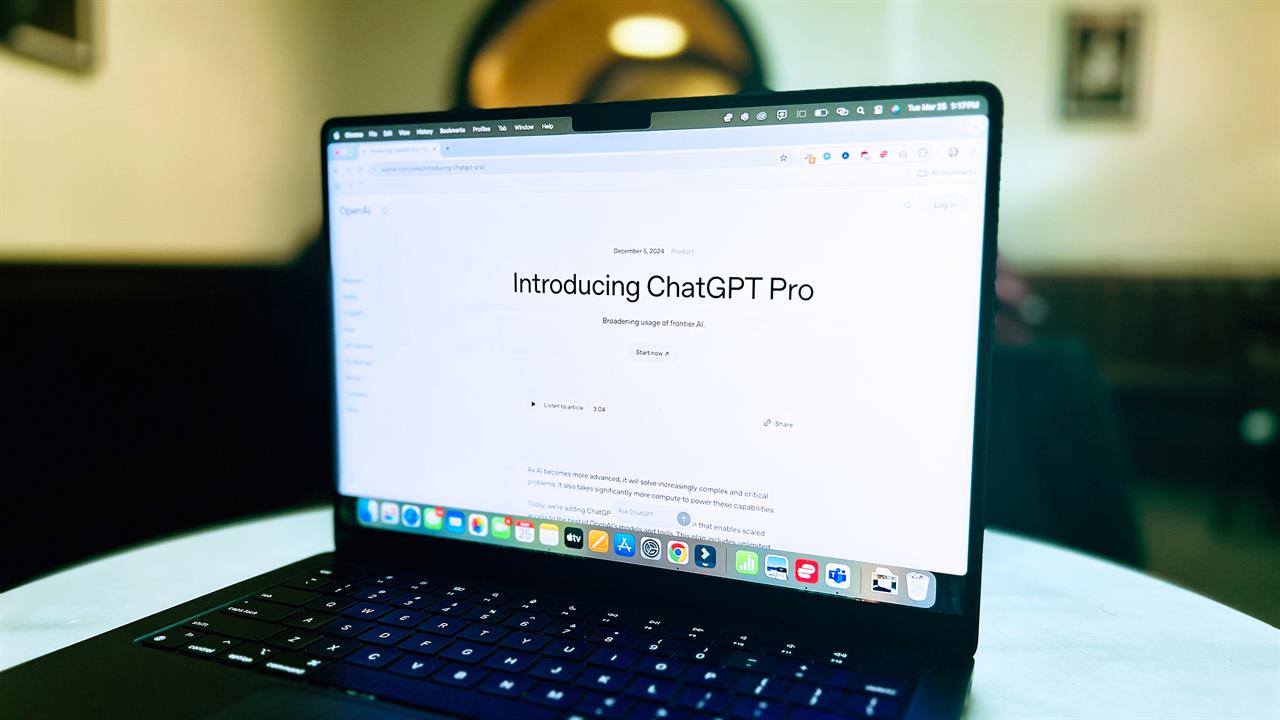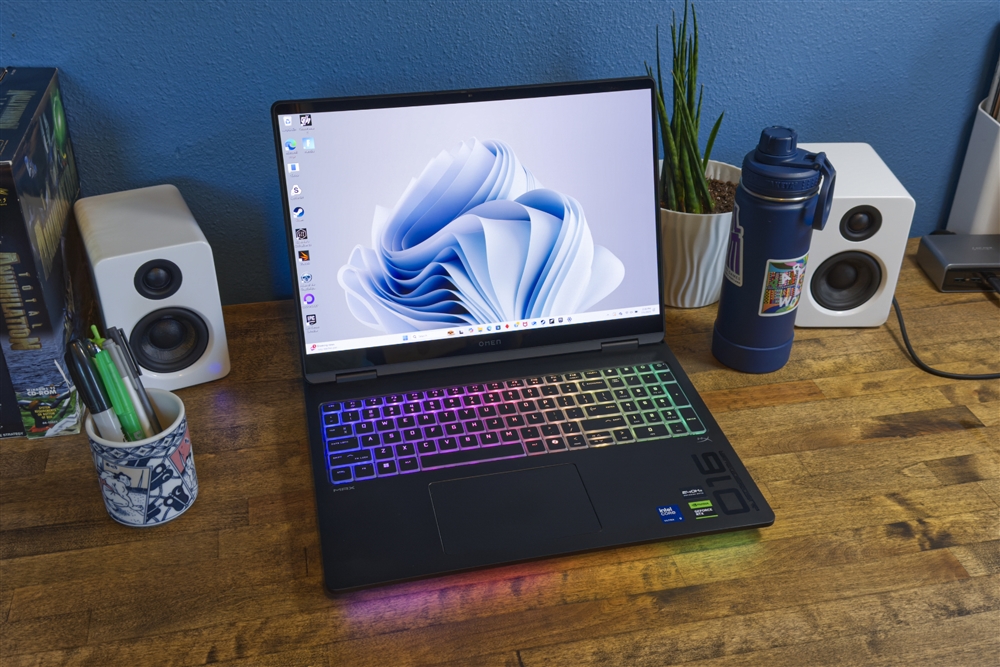Can ChatGPT Pro Make You More Productive?
The AI chatbot's $200/month plan promises to broaden access to "frontier AI" and "accelerate productivity."How-To

OpenAI is constantly adding new features to ChatGPT Pro, so it can be difficult to understand exactly what you're getting. Right now, the company says the Pro membership level, "enables scaled access to the best of OpenAI’s models and tools," and, "also includes o1 pro mode, exclusive to Pro users."
Can ChatGPT Pro really boost productivity? And more importantly, who is this $200/month plan right for? (One quick note before we begin: I paid for ChatGPT Pro myself, and I paid full price.)
What do you get when you spend $200 a month on ChatGPT?
Here’s what you get from ChatGPT Pro as of March 2025.
- All features included in ChatGPT Plus (like custom GPTs loaded with your documents)
- Unlimited access to GPT-4o, o1, o3-mini, o3-mini-high, voice
- Large 128K context window (vs 32K for Plus and 8K for free users)
- Access to previews and new releases, currently including Operator and Deep Research
- Higher usage limits on video generation and image generation
That’s certainly a list of features, but OpenAI's various product offerings can be tough to decipher. Let’s try to clear up the confusion.
Unlimited access to reasoning models is useful for programming
Perhaps the most confusing feature of ChatGPT Pro is the inclusion of OpenAI’s reasoning models: o1, o1-pro, o3-mini, and o3-mini-high. These models use self-prompting to reason through problems. Practically speaking, that means they’re better at making decisions based on implicit rather than explicit instructions.
To demonstrate this, I asked different versions of ChatGPT to make a basic web app for tracking combat initiative in a tabletop RPG. Here’s a link to the full prompt, but it reads in part, "Write some javascript for a combat tracker app for a tabletop RPG." I’ve already made a web app that does this, using Claude as my coding assistant, so I have a standard by which to judge the results.
Here’s a list of links to the web app each version of ChatGPT spat out, plus two versions from competitive models: Claude 3.5 Sonnet and DeepSeek R1.
- ChatGPT – GPT-4o
- ChatGPT – o1
- ChatGPT – o1-pro
- ChatGPT – o3-mini
- ChatGPT o3-mini-high
- Claude – Claude 3.5 Sonnet
- DeepSeek – DeepSeek R1
Comparing the code in detail isn’t the point I’m driving at here, so I’ll let experienced coders judge that for themselves. Zooming out, though, a few things are obvious.
All the models present a basic, functional web app, but some had trouble with the details. I asked for a "modern, attractive app," and was surprised by Claude's result, which clearly skipped the "modern" portion of the prompt. Claude and DeepSeek also make the odd choice to keep the Combatant and Condition entries fields separated, which I think is an awful UI experience.
GPT-4o follows the prompt better, and its use of an input pop-up for entering condition information is, in my opinion, preferable to the always-visible input fields provided by the quicker reasoning models (o1-mini, o3-mini, and o3-mini-high). However, I think the reasoning models offer a better look and feel.
![]()
Screenshot: Matthew Smith
OpenAI's o1-pro, though by far the slowest to deliver a result, was also the best. It provides an attractive interface that’s compact and fulfills the features requested. The location of the Update button, which is used to confirm changes to the initiative and HP values, is a bit confusing, but it's otherwise not bad.
But is it worth the $200 ChatGPT Pro charges each month? That depends on how often you need to code new tools. For me, the added cost seems hard to justify even though o1-pro seems to have an advantage. I use AI for just a few projects, like the combat tracker and my personal webpage, and Claude 3.5 works well enough (with some prodding) for my occasional coding needs. I don’t know about you, but I only need one professional website.
If you’re a professional programmer, though, I can see the appeal of ChatGPT Pro. Prompting an AI model to code a simple program, script, or UI mock-up could save you several hours of work, depending on the task and your familiarity with the programming languages, frameworks, and dependencies involved…and OpenAI's o1 is a leader in programming benchmarks.
Oh, and ChatGPT Pro has another edge over many competitors: usage limits. I frequently hit them when using Claude 3.5 Sonnet at peak times. DeepSeek, meanwhile, is a gamble—sometimes it works, and sometimes the server goes down for 15 minutes. ChatGPT Pro is much more reliable.
Can ChatGPT Pro automate basic tasks and research?
Programming is a key use case for AI tools, but it’s not the only thing ChatGPT Pro wants to automate. It also provides access to two features, Operator and Deep Research, that might help you automate simple tasks and research.
Read more: How to Use an AI Agent
I’ve already covered Operator to create an AI agent, so check out that deep dive if you want the details. But here’s the basics: Operator is designed to automate tasks you can accomplish in a web browser. It can handle simple tasks, like online shopping, but often requires intervention or guidance. It won’t bypass anti-bot measures, either, which cuts off easy access to many websites.

Screenshot: Matthew Smith
Deep Research, on the other hand, tries to automate deep, extensive research into a topic. It does this by searching the web and ingesting information from up to a couple dozen sources. I’ve heard it described as an "analyst on demand." But can Deep Research really deliver useful results?
I prompted it with three test scenarios: researching a career as a freelance journalist specializing in finance, starting a pizza restaurant in Portland, Oregon, and choosing computers for a small business. The links will bring you to each chat, so you can see it for yourself.
The results are solid. The career advice is like the advice I'd give but backed up with more sources. The advice on starting a pizza restaurant successfully points out a couple of under-served areas in a city with a buffet of options. I’m not as keen on the advice on buying computers for a small business, which feels over-produced, but it’s ok.
As you might have noticed yourself, AI chatbots are eager to please, and Deep Research is no exception. I gave it another prompt about starting a small business (this time, a coffee shop) with an absurdly unrealistic budget, and made it clear I’m not interested in the product I’d be selling (coffee).
Despite that, ChatGPT Pro plowed on with a lack of self-awareness. The advice is reasonable but misses the obvious problem: trying to start an underfunded small business in a niche you don’t care about is a bad idea -- feedback that might still require human judgement to deliver.
That’s a key problem with Deep Research. It’s great at summarizing information, but it lacks the domain expertise to understand when the information it summarizes doesn’t support the goal implied by the user’s prompt.
What about image and video generation?
The final point in ChatGPT Pro’s list of features is expanded access to image generation tools. While it's possible to use them without ChatGPT Pro, usage limits quickly get in the way.
Who is ChatGPT Pro for?
I’ve enjoyed using ChatGPT Pro, but I won’t renew my subscription right now and I wouldn't recommend ChatGPT Pro to most people, given the cost.
OpenAI says that ChatGPT Pro will "accelerate productivity," and OpenAI CEO Sam Altman has repeatedly said he expects someone will use AI to build a billion-dollar business. The idea is that, in the not-too-distant future, people will be able to have a full workflow with AI agents.
ChatGPT Pro is built for that ambitious idea. It’s trying to do everything at the same time, in the same app, available on Windows, MacOS, iOS, Android, and in your browser. It's not there yet, but that's not to say ChatGPT Pro is useless.
If you want to make a web app, start a business, or look into a new hobby, it's not a bad idea to sign up for a month of ChatGPT Pro to get started and investing in a month or two of membership to get a few Deep Research reports and some coding work from o1-pro might be worth it to get you up and running. Once you’ve completed some research or prototyping, you can even revert to ChatGPT Plus (or Anthropic's Claude, or DeepSeek's V3).
In this future, something like ChatGPT Pro's Deep Research will identify a gap in the market and come up with a business plan for an app; o1-pro will program it; Operator will deploy it and, once it’s deployed, Sora will advertise it with videos based on scripts written by ChatGPT 4o.
Read more: AI Tools and Tips
- How to Use an AI Agent
- DeepSeek's New AI Challenges ChatGPT — and You Can Run It on Your PC
- How To Improve Your AI Chatbot Prompts
- How I Turned Myself into an AI Video Clone for Under $50
- What is Meta AI? A Capable Chatbot That’s 100% Free
- How to Get Started with Copilot for Microsoft 365
- Getting started with LM Studio: A Beginner's Guide
- Meet Claude, the Best AI You've Never Heard of
Matthew S. Smith is a prolific tech journalist, critic, product reviewer, and influencer from Portland, Oregon. Over 16 years covering tech he has reviewed thousands of PC laptops, desktops, monitors, and other consumer gadgets. Matthew also hosts Computer Gaming Yesterday, a YouTube channel dedicated to retro PC gaming, and covers the latest artificial intelligence research for IEEE Spectrum.











